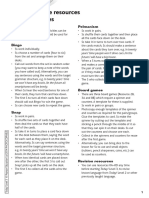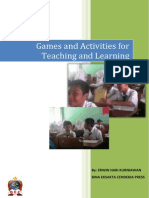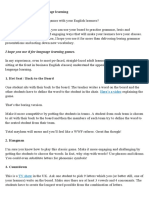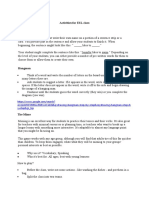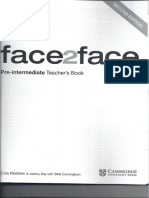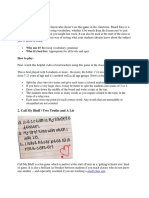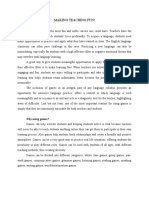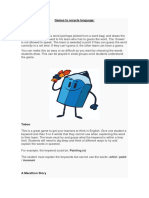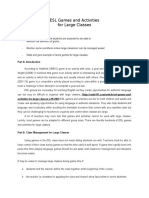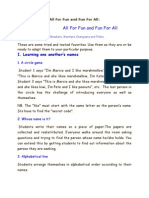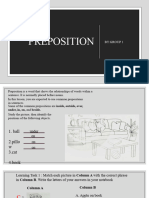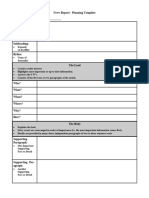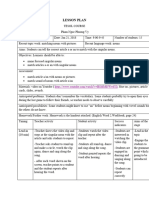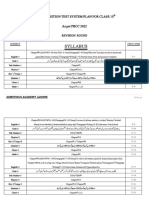0% found this document useful (0 votes)
158 views5 pagesAlibi: The Story
This document provides guidance on using games effectively in the English language classroom. It discusses factors to consider when choosing games, such as their relevance to the language points and skill areas being taught. Popular games that can be adapted for language learning are described, along with tips for modifying them. Sample lesson plans are also provided that incorporate games into the stages of a lesson to practice specific grammar structures like questions in the present and past simple tenses. The document emphasizes selecting games appropriate for students' ages and language levels, and providing clear explanations to ensure understanding of game instructions and language practice.
Uploaded by
adityariadiCopyright
© © All Rights Reserved
We take content rights seriously. If you suspect this is your content, claim it here.
Available Formats
Download as DOCX, PDF, TXT or read online on Scribd
0% found this document useful (0 votes)
158 views5 pagesAlibi: The Story
This document provides guidance on using games effectively in the English language classroom. It discusses factors to consider when choosing games, such as their relevance to the language points and skill areas being taught. Popular games that can be adapted for language learning are described, along with tips for modifying them. Sample lesson plans are also provided that incorporate games into the stages of a lesson to practice specific grammar structures like questions in the present and past simple tenses. The document emphasizes selecting games appropriate for students' ages and language levels, and providing clear explanations to ensure understanding of game instructions and language practice.
Uploaded by
adityariadiCopyright
© © All Rights Reserved
We take content rights seriously. If you suspect this is your content, claim it here.
Available Formats
Download as DOCX, PDF, TXT or read online on Scribd
/ 5
